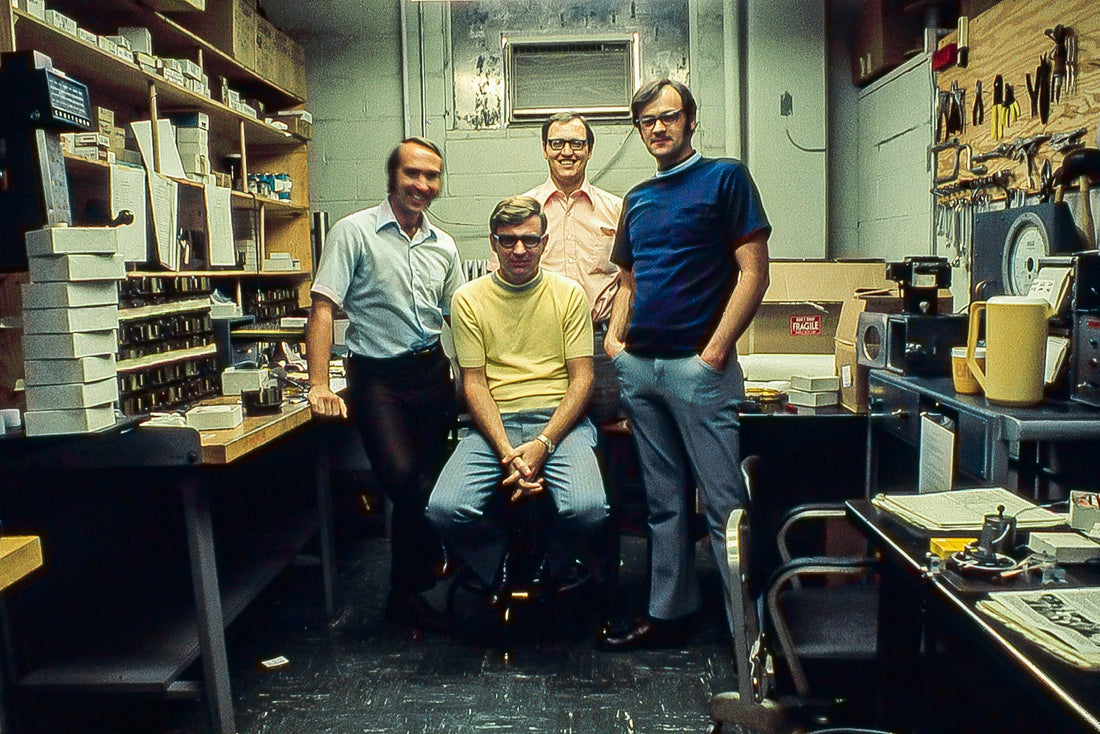
Generations of Hoosiers Continue to Serve in Indiana’s Defense Community
Share

By Garrett Beatty
The scent of cigarette smoke lingered in the dim light of a government basement, where young draftsmen hunched over drafting tables, pencils in hand. It was the early 1960s—America was deep in the Cold War, and the U.S. Navy underwent rapid change under President Kennedy. In that moment of national urgency, two young men from Greene County, Bob Beatty and Stanley Herold, began careers that would shape their lives—and quietly support our country's defense.
Both graduates of Lane Technical Institute in Indianapolis, Bob and Stanley started at the Naval Ammunition Depot (NAD) in Crane, Indiana, in 1961. At the time, the base had already become a vital hub of American military strength. Since its founding in 1941, just before the U.S. entered World War II, Crane had employed thousands of Hoosiers—teenagers, retirees, women, and high school seniors—who came together to support the war effort. Known groups like the Boy Ordnance Workers (BOWs) and Women Ordnance Workers (WOWs) helped transform Crane into the most significant naval ammunition depot in the world by 1944, with over 10,000 civilian workers and more than 1,300 Navy and Marine personnel on site.
By the late 1940s, Crane's mission had grown beyond ammunition production into testing and evaluating weapons systems. That shift laid the groundwork for decades of technical innovation and careers like those of Bob Beatty and Stanley Herold.
In their early days, Bob and Stanley worked in mechanical drafting and applied science, sketching precision designs at graphite-dusted tables. Their work quickly evolved from entry-level assignments into problem-solving, hands-on innovation. Over the years, they became known for their ability to turn complex engineering ideas into practical tools used by sailors, soldiers, and Marines worldwide.
Among their many contributions, the two men helped design and refine several patented devices, including:
- Handheld Emergency Signal (1975) – co-developed
- Smoke and Illumination Device (1976)
- Submerged Signal Mechanism (1979)
- Aerial Signal System (1980)

One of their most important designs was the Handheld Emergency Signal, built for one-handed use in stressful situations. Its spring-loaded ignition mechanism made it easy to deploy quickly and reliably—marking a step forward in emergency signaling technology. Beyond signaling, they also worked on mechanical dispensing systems, which improved how specific tools and materials were safely deployed in the field.

Stanley often led structural design, known for initial blueprints that needed very little revision, while Bob focused on assembly and efficiency. Together, they turned ideas into dependable, field-ready tools. Their teamwork reflected Crane's more immense spirit: making theory work in the real world.
But their legacy goes beyond technical achievements. Bob Beatty and Stanley Herold were part of a workforce that offered long-term careers for generations of Hoosiers. In southern Indiana, it's common to find entire families working at Crane. My own family is among them.
My great-grandfather Dale Williams of Elnora served in France as a U.S. Army engineer during World War I and later worked at Crane as a pipefitter in the 1940s and 1950s. My grandfather, Bob Beatty, served at Crane from 1961 to 1996 during Vietnam, the Cold War, and Desert Storm. My father, Todd Beatty, worked as an engineering technician from 1982 to 2007. He was involved in investigating the USS Iowa turret explosion in 1989—a case requiring deep technical analysis and a careful approach.

I also worked at Crane for a time. I spent just over a year in the Corporate Communications department, photographing testing, activities, and visitors on base. It was special to walk the same halls that my father, grandfather, and great-grandfather had once walked. At the time, I thought that might be my career—but Hoosier Brand came along, and perhaps that was meant to be. Still, the pride I feel for my family's service and the people of Crane remains strong.
A photo taken in 2015 captured Bob and Stanley together again, decades after they began their careers, seated side by side. It now sits next to a black-and-white image from the 1970s, showing them in their original workspace. Together, the photos are a reminder of the quiet legacy they helped build—one of skill, dedication, and service.
Today, that legacy continues to grow. Nearly three decades after the Cold War, Crane and the surrounding WestGate area have become part of a thriving defense and technology corridor. And in 2025, a new chapter is unfolding in Bloomfield, Indiana.
Prometheus Energetics, a newly formed American defense company backed by Kratos Defense and RAFAEL Advanced Defense Systems, will soon break ground on a next-generation production facility. The company plans to build its headquarters on 550 acres near Crane. The site will produce solid rocket motors, energetics, and munitions in partnership with the Department of Defense's Munitions Campus Pilot Program—an effort led by the American Center for Manufacturing & Innovation (ACMI) to modernize and secure the U.S. munitions supply chain.
Located beside Crane Army Ammunition Activity and Naval Surface Warfare Center - Crane, the new facility has been carefully planned through land acquisitions and collaboration with local and state officials. The Indiana Economic Development Corporation has praised the project as a significant addition to the state's defense ecosystem. It will strengthen national security and create long-term career opportunities for Hoosiers in the Indiana Uplands.
Construction will begin in late 2025, with openings starting in 2027 and beyond.
From the Cold War drafting tables to tomorrow's rocket motor facilities, Crane remains a place where American innovation begins—and where generations of Hoosiers have answered the call.
